A Brief History of Omoi in 3 Parts - 2012–2016
This era of the shop saw a cascade of product concept test-runs, branding changes in rapid succession, and a general attempt to nail down what felt true to the shop mission while growing our customer base and keeping our existing customers excited. We stopped selling apparel and began to experiment with different gift categories, while strengthening our popular stationery selection.

The shop decked out for holiday in November 2011.

We were getting savvier with our online photography and beginning to try more persuasive marketing tactics.

The annual Cherry Blossom Festival used to be a big deal for us, but as time wore on we found that festival goers expected different things from us than our regulars.

Here is the sunny north-facing window above the store where we used to shoot everything.
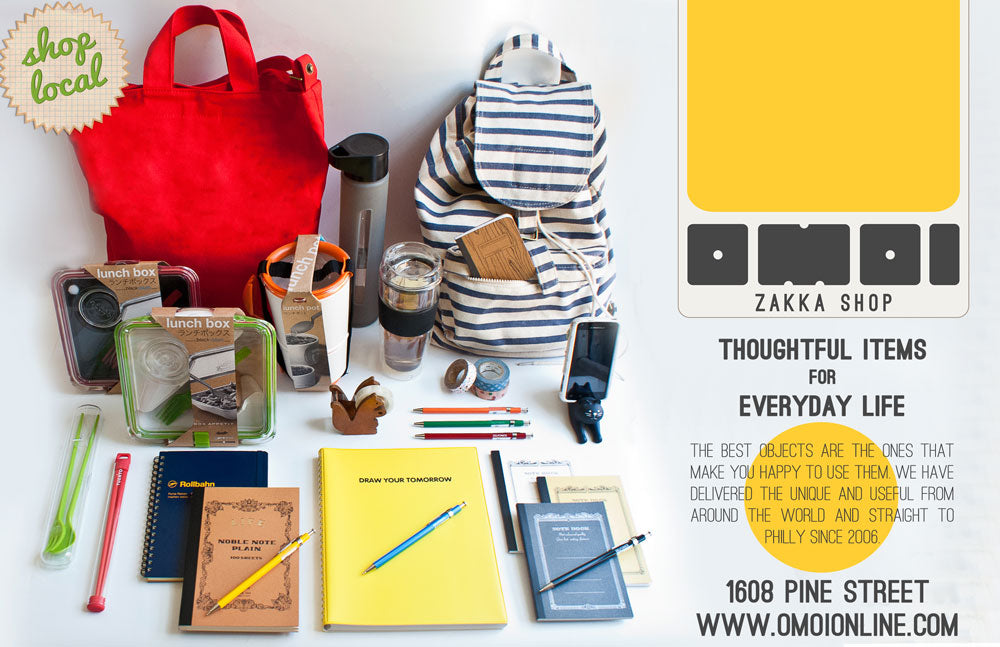
And here we are at the start of introducing marketing around the philosophy behind our name and product selection. Note the introduction of "zakka shop" to our logo (and ignore the free fonts).
By 2012, Philadelphia indie retail seemed to be reassembling itself post-recession, and trends in indie retail overall were shifting. Instagram was on the rise, small business e-commerce platforms were popping up, and we were beginning to see entire boutique and product launches done exclusively on these fledgling platforms. Meanwhile, we had established ourselves as a source for stationery and gifts, winning our first Best of Philly for Office Accessories. Elsewhere, once-trending vinyl collector's toys and graphic streetwear tees shifted to American heritage, Made in USA, and artisanal everything. New boutiques and brands founded during this time seemed to exclusively center around this trend featuring brown leather, dark wood, brass patina, and selvedge denim. We found ourselves with bright yellow walls and a colorful late 2000s vibe that now needed updating. Sure, we too sold raw selvedge denim since opening, but as we covered in Part 1, the pop aesthetic was a period in time that we were growing up from. So we decided it was time for a remodel.

The store in June 2012 on the left, and the store at the start of August 2012 on the right.
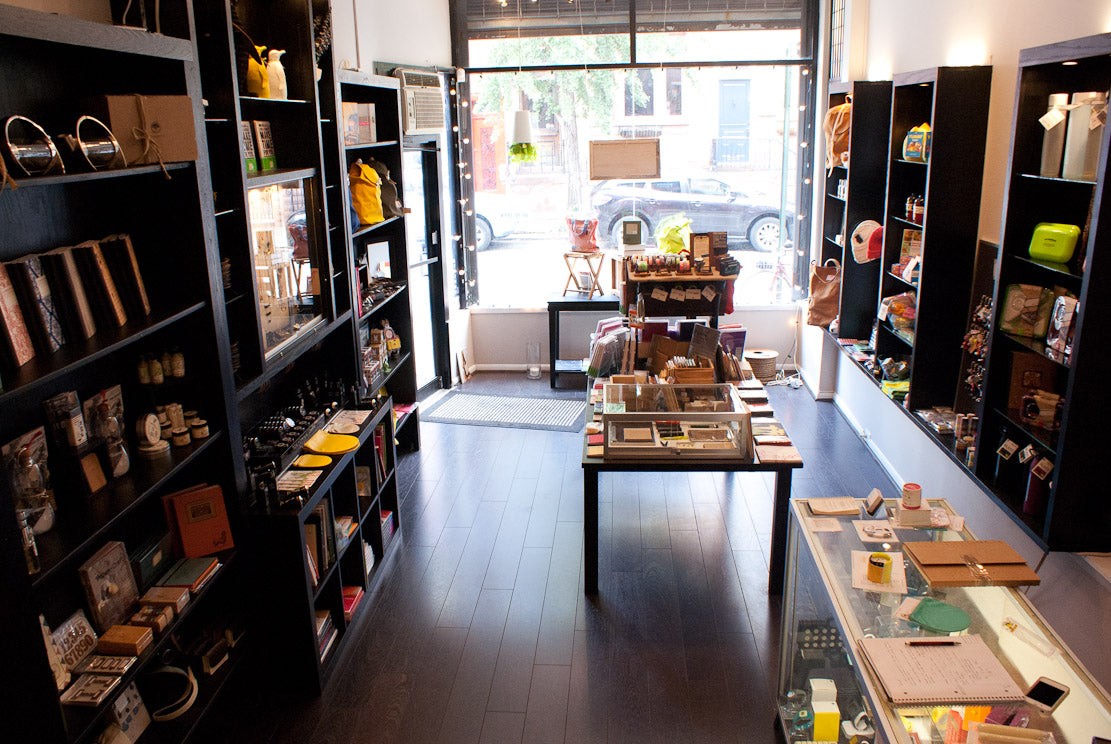
The store in late August. We don't have anything in the window hardly, and the whole shop feels incredibly pared down.

Suddenly without the yellow walls, things start to look more sophisticated.

But there's literally nothing on the walls! (Hi, M2!)

Liz behind the desk on a humid September day. We had just gotten back from a business trip to the Kanto and Tohoku regions in Japan*. More on that later.
I'll let Liz take it from here:
A little background that speaks to the points about the shift in product, winding down of apparel & light rebranding: I started the process of opening the store in early 2006, with the doors opening in late 2006. I had apparel, books, gifts & all the stuff we saw in Part 1. We were actually doing pretty well with that in terms of profit & loss. But in 2008–’09 the recession hit and radically shifted how consumers could shop, and who could shop, and any and all money earned and saved got directed into keeping the doors open. (This always personally sticks in my craw a bit because I feel a lot of “what could have been” feelings, compared to stores that opened in the 2kteens & immediately popped off on social media, but on the other hand, many many Philly/USA small shops closed between ’08–’10, and we at least kept the business through our own hard work and dedication). Throughout that time, I emphasized buying product that was what the neighborhood voiced their interests in, even if it wasn’t necessarily my own, and we rode out the storm and felt like we really became part of the neighborhood—people saw us bringing in what they asked about, and made sure to support us.
The recession in the US also meant that some of our vendors closed, especially the smaller, indie & artist-run ones—and more importantly to our global concept, many international vendors no longer found it to be profitable or worthwhile to sell to US retailers. This was the number one factor that set in motion the decision to move away from apparel & collectibles (our top lines literally closed or halted production—ex: 2kbyGingham & KidRobot were two of our most notable closures). However! the big advantage that we had—we had started to build personal relationships with some of our vendors in Japan, and continued working together, even when they otherwise exited the US market (ex: Mark's & Juice Planning in particular—the sources of our OG stationery, plus the wooden zakka & cat stuff, which wound up bringing us big success since we were literally the only USA retailer offering some of these things at the time.
Recognizing that we had these relationships & access to this type of product which was gaining us attention, paired with the slow climb out of the recession led to us starting to re-evaluate what it was that we really wanted to do. I had a pretty deep think and realized that apparel buying was not where my heart was, and the happiest moments that I found with Omoi were when we were finding these small type items & stationery, and I realized that this correlated directly back to my obsession with the Konan high school store & all the care packages that I’d bring back for my friends—I’d always be bringing them back letter sets & pens & cute socks and stuff.
That dovetailed nicely with the time that you [editor's note: that's me, Monk, the now online director] were working more full time and had deep & well researched knowledge of what kinds of stationery trends & brands & qualities would come into fashion on places like Tumblr, and so our combined interests resulted in a reputable & well-planned desk/office statement, which is what won our Best of Philly 2012.

The two of us always felt strongly about global friendly relations (I have no clue how to describe studying abroad w/o sounding corny) & the idea of bringing items from the rest of the world to Philly, and learning about other culture’s daily routines through product design. I feel like this was a little against the grain of what was popular post-recession: Made In USA, Shop Small, Shop Local, & American "heritage" style. I recall the feelings surrounding the name update was an attempt to put some context for our Philly & USA customers)—adding “SHOP” to the title in particular, and banking on “zakka” to be a Japanese word & trend that would gain recognition and potentially resonate with non-Japanese speaking customers.

The back room begins to change and evolve.

[Editor's note: The joke is that "zakka"—a word that means daily goods—still has yet to gain traction, though some likeminded retailers like nico neco zakkaya are out there. In general, other self-described zakka shops seem to have a much more paper-based, handcrafted, and neutral aesthetic, which can seem at odds with our particular style. Oh well! For a detailed explanation about our store name, check our About page]

The stories we have about these damn wooden cat zakka items...

One of the three logo changes we did during this time.

The store coming along in August 2014, when small-batch "apothecary" items began to trend.
So, it’s early 2kteens, everything is DIGITAL & social media is THE big thing and here we are trying to sell analog stationery. We still wanted to maintain some type of homewares/gift component, and we had a bunch of vendors that we had become friends with—like BAGGU, Komono, Nippon Kodo incense, West Third Brand fragrances, Takenaka Bento Boxes—that became very popular for us. Combined with our hard-to-find stationery brands, we received a decent amount of organic press for this curation of items [before Amazon referral links funded payroll for so many websites], and I think by now it's been established that what we offer is stylish & chill, we’re reputable, and we bring in coveted stuff.
I think this digital free-for-all era was also the height of when your copywriting & photography were being most plagiarized—you were literally translating packaging (I recall [a Japanese company] getting “inspired” by your translation when they launched their English language packaging), and many many photos were getting lifted [editor's note: to the extent that vendors would repost content boosting a retailer on their IG but it would be our in-house photo!!]. In store, we began to notice a fanbase consisting of [redacted national retailer's] designers & buyers [wherein they would begin selling obscure items that Omoi was the debut US retailer for], but my motto about this has always been “Imitation is the sincerest form of flattery”.
This kind of ties back to the beginning where I said I feel some way about riding out the recession—we were at an acute disadvantage compared to the new stores that had the advantage of social media already existing, and apps that do instant-branding/instant logos, etc. Shopify was hitting it’s stride, and any random person could [and did!] anonymously pop up shop online, copy your text, research & photos, and get clout, whereas we had to devote many of our resources to maintaining our existing brick-and-mortar business, paying staff, and so on. But again, I really try not to be salty about it because of the privilege of being able to open the store in the first place. And interestingly, the uptick in overnight online-only boutique retailers kept us on our toes in a way that we could stay abreast of trends (and their overkill) in real time. Before this era, we typically had to physically trawl the massive New York gift shows in order to get a bigger picture of upcoming trends.
So there was a lot of rapid change that happened during this time, for us and in retail in general. We painted the walls a neutral color, remodeled the store to add shelving where apparel racks once stood, added more informative signage to our front window, and then not long after in 2015 we opened a second concept store, meant to be a grown-up version of Omoi Zakka with an easy name: Select Shop. It was there we had the opportunity to test out new merchandise concepts that the 500 square foot Rittenhouse store physically didn’t allow, and we finally literally had desks to work at. We were beginning to appear with regularity in local and national publications, and everything was coming up Milhouse… when the fire hit.

The front of the shop Halloween 2012.

We began introducing more neutrals into the product lineup.

We built a collapsible back table to work at, and that little table is where we packed ALL of the online orders, for years.

Our now logistics manager, April, joins the team.

The 1600 block of Pine was still rather sleepy, tucked between quiet antique shops and our favorite deli across the street (which went on to become This Corner in 2019).

Back to school 2013. Ooh how spacious this case looks then.

By 2014 we brought Porter and other higher end baggage into the shop…

…and finally removed the manga collage backdrop from the cashwrap.

Ryo Takagi prints stayed popular through all the changes.

Meanwhile, Liz and Monk began having bonafide planning meetings in the tiny office above the shop.
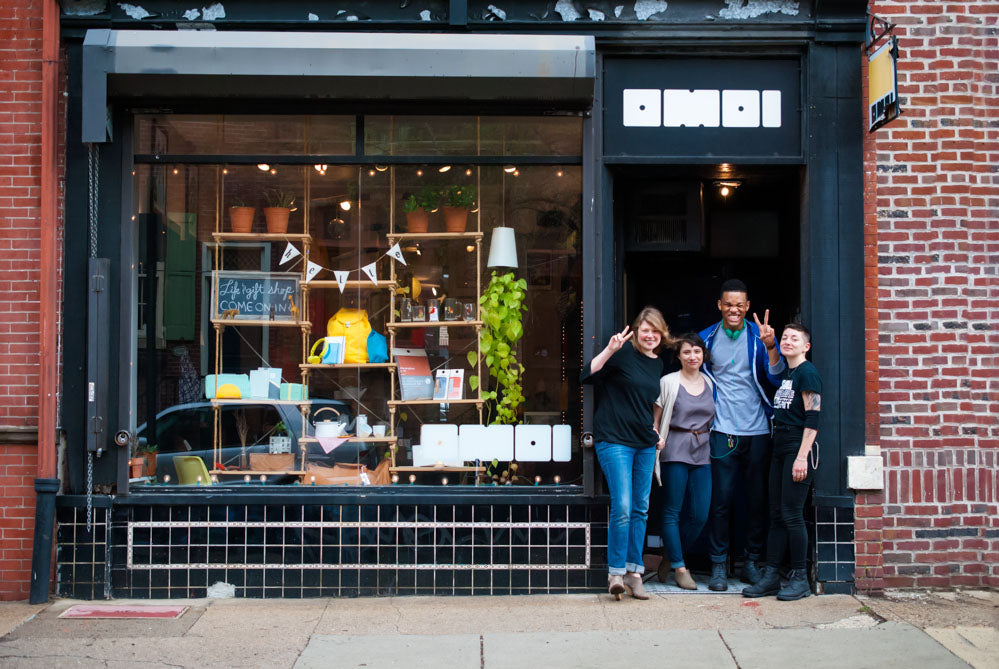
Liz, April, Taylor, and Monk in April 2014

By October the store was ready for holiday, and we were trying out kitchenwares and entertaining.

Cast iron bottle openers and small-batch simple syrups were hot.

Around this time we built up our back room into the format it would remain, and reintroduce a dedicated kids section.

By 2015 we were settling into what would become fixture lines in the shop.

Peekaboo.

Surprise! We opened a 2nd store just in time for 2015 holiday!

With all the space our Old City store offered, we opened with the concept of select homewares and lifestyle items.

We thought we would leave all the stationery at Pine Street—can you believe that?

By April 2016, we were still experimenting with just the home & life concept, but after a Back to School stationery pop-up proved super popular, we decided to integrate the two shops and rebrand one more time.

Design books! Home decor!

This part of the store is now absolutely jam packed with stationery.

And by 2016, back at Pine Street, we were getting into the enamel pin craze and rising interest in ceramics.

A cool Pine Street view on a hot July day.

The chalkboard working hard to promote our socials, new arrivals, backstory, and shop announcements.

Yes, things were really starting to come along in 2016.
Stay tuned for Part 3, 2017–Present.
Bonus: What was that about a business trip?

A newspaper clipping about international business interest, featuring Liz and Monk with our friends at JETRO
*Right after our Pine Street renovation in 2012, we were invited on a business trip by the Japan External Trade Organization. The March 2011 Tohoku Disaster was fresh in everyone's memory. Not only did the disaster entail an enormous magnitude 9 earthquake and tsunami, but it also triggered the Fukushima Daiichi nuclear disaster. As a result, many international vendors became wary of doing business with Japanese companies, especially those from the Tohoku region, due to concerns over nuclear contamination (a prime example was a company that made wooden children's toys). This became an issue at all because the Japanese government and TEPCO energy company were accused of playing down the severity of the situation, and became a great source of mistrust between Japanese citizens of the region, not to mention the international nuclear science community. At the trade shows we attended post-disaster, many Japanese manufacturers had taken to hiring their own nuclear testing to vouch for the safety of their products. Wow, right? And us, who had quite a few established business relations with Japanese companies—we were invited on the trip for the express purpose of renewing international interest in the region.

The happening nexus of downtown Sendai.

Just one of the many vibes captured during our trip.

And the calming green fields further out into the surrounding countryside.
We chronicled the whole thing on our tumblr, but many images are broken due to being hosted on our now-defunct Wordpress webshop. BUT! Fun fact: Thanks to this trip we began to carry Tegami greeting cards.

A Tegami birthday card on the shop's card wall.
Ok, for real now, stay tuned for Part 3. If you read this far, we love you.














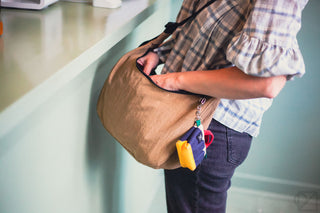

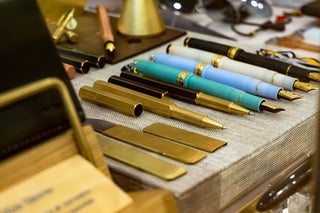


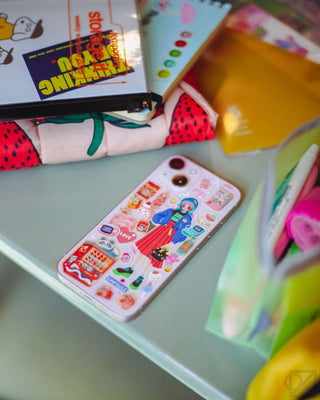


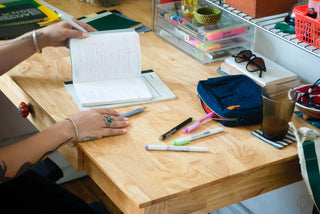


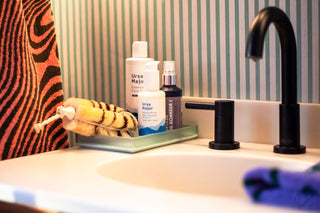



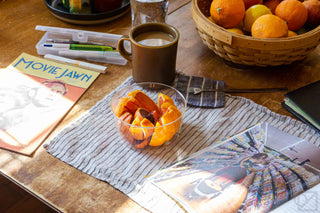

T
I really enjoy reading the brief history series! It’s cool you guys have tight relationships with Japanese business associations and vendors and even got covered by a newspaper there (I enjoyed reading that article too)! I am looking forward to reading Part 3 and so on. I miss the Pine Street shop but at the mean time I am excited to visit the Olde City shop!